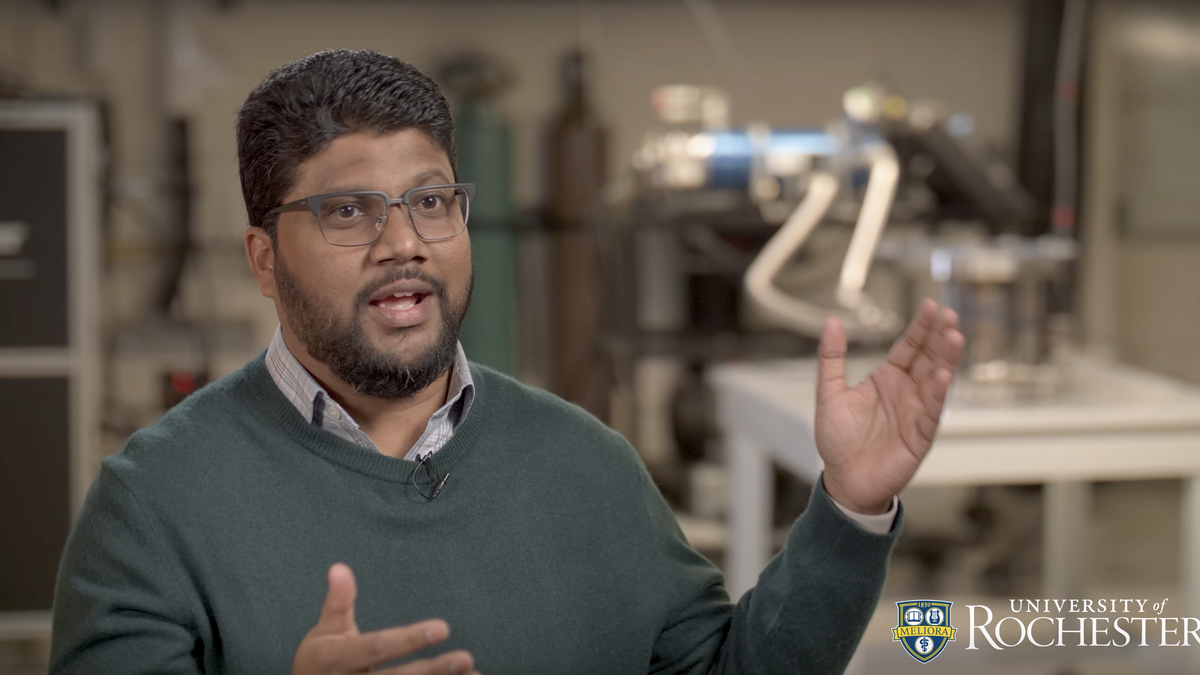Allegations of scientific misconduct mount against Ranga Dias and his work.
On March 9, the physics journal Physical Review Letters (PRL) launched an investigation into a June 2021 paper coauthored, among others, by Ranga Dias, following allegations of data manipulation, in the same week that Dias and others reported in a different journal that they had discovered room-temperature superconductivity in a material compressed by a few thousand atmospheres of pressure.
The new claim has thrust Dr. Dias and his colleagues back into the spotlight, where they have been before for claiming the discovery of superconductivity in similar circumstances, in europium in 2009 and carbonaceous sulphur hydride in 2020.
Now, Dias et al. have reported in Nature that nitrogen-doped lutetium hydride becomes superconducting at 21º C and under 20,000 atmospheres (atm).
The claim has set the condensed-matter physics community aflutter because the discovery of superconductivity at or near room temperature and ambient pressure (i.e. 1 atm) is one of the field’s greatest pursuits. Researchers have found other materials that superconduct at or near room temperature but only when they’re compressed by 100-1,000-times more pressure.
Data manipulation
However, even though the Dias et al. paper has been published in Nature, a respectable journal, many other physicists have already said they will hold off on believing the study data until they can independently verify it. This is partly because of data availability and Dr. Dias’s previous track record – record that now includes the new investigation PRL has launched.
“This certainly appears to be a momentous advance,” Vijay B. Shenoy, an associate professor at the Centre for Condensed Matter Theory, Indian Institute of Science, Bengaluru, told The Hindu. “My personal concern is that the lead investigator has not been without controversy.”
After Dias et al. reported in 2009 that europium becomes a superconductor at very low temperature and very high pressure, at least one scientist acquired the raw data from the experiments from one of the study’s coauthors and found evidence of manipulation. Once the issues came to light, PRL – which had published the paper in 2009 – retracted it in December 2021.
In October 2020, Dr. Dias and others reported in Nature that carbonaceous sulphur hydride (CSH) becomes superconducting at around 14º C and 2.6 million atm of pressure. Soon, independent scientists who synthesised the material according to the original recipe and conducted the same tests on it that Dias et al. had reached different results. The finding didn’t replicate.
Two days after the europium paper was retracted, Dr. Dias and his colleague Ashkan Salamat released the raw data of the CSH paper. There, independent scientists quickly found anomalies in the magnetic susceptibility data. (When a material transitions to a superconducting state, its magnetic susceptibility should plummet to zero. This is one of the checks for superconductivity.) The CSH paper was retracted in September 2022.
PRL investigation
Earlier this month, James Hamlin, a physicist at the University of Florida, told Physics magazine that Dr. Dias’s 2013 PhD thesis had plagiarised from Hamlin’s 2007 thesis. Dr. Hamlin has also informed PRL that a resistivity plot in Dr. Dias’s thesis, for germanium selenide, resembles the same plot for manganese sulphide in a 2021 PRL paper. These two materials aren’t supposed to have the same resistivity plots.
Lilia Boeri, at the Sapienza University of Rome, told Physics that the latest finding reported by Dias et al. is contrary to what physicists know about the behaviour of nitrogen-doped lutetium. For similar reasons, Mikhail Eremets, at the Max Planck Institute for Chemistry in Germany, told Physics World that independent replication of the results will be of “paramount importance”.
Dr. Eremets is celebrated for his group’s discovery of superconductivity in a metallic hydrogen alloy in 2015, at –70º C K and 1.5 million atm. Dr. Dias and Isaac Silvera at Harvard University (and Dr. Dias’s postdoctoral mentor) reported in 2017 that they had made metallic hydrogen (unalloyed) under a much higher pressure of 4.9 million atm. This result has been received unfavourably as well.
For now, reports in specialist publications indicate that the wider community’s confidence in the new results remains low. One issue is that the new paper favourably cites a disputed technique in the retracted 2020 CSH paper. Another is that, per the New York Times, Dr. Dias isn’t ready to share a precise recipe that others can follow to make the nitrogen-doped lutetium hydride for independent tests because he plans to commercialise the material.
But because the new result reportedly requires much less pressure to become superconducting than hydrogen or CSH, physicists expect more labs will be able to independently test the results than before.
- alf9872000 and Karlston
-

 2
2



Recommended Comments
Join the conversation
You can post now and register later. If you have an account, sign in now to post with your account.
Note: Your post will require moderator approval before it will be visible.